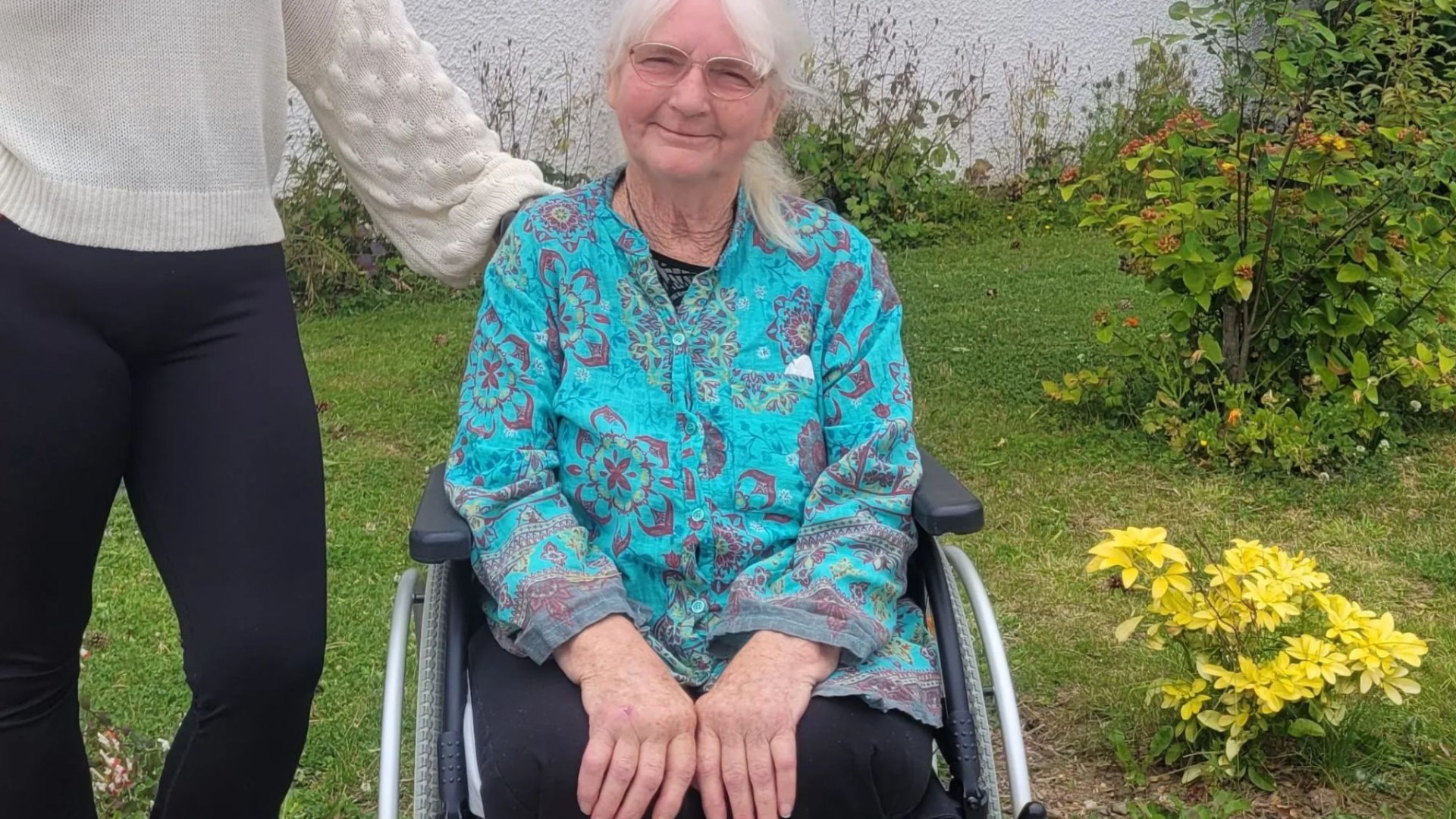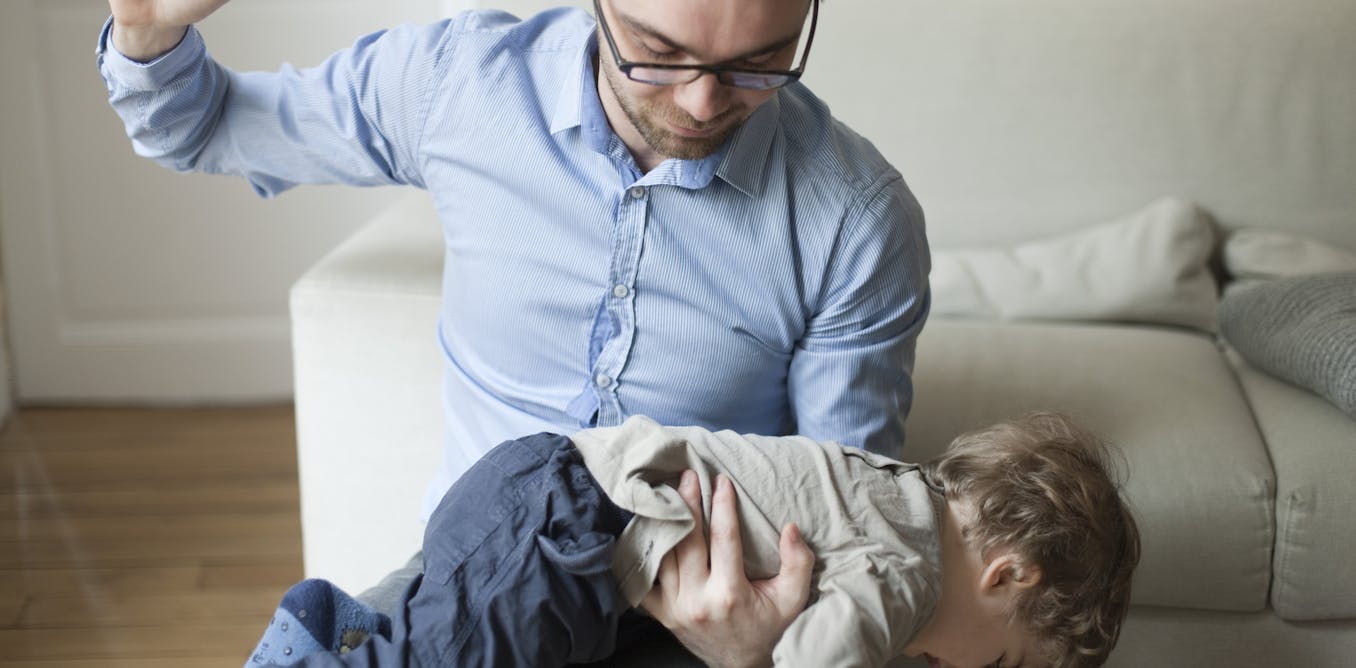A MUM says she was forced to have both her legs amputated after getting two insect bites while gardening at home.
Josie Rowley was tending to her plants in September last year when she says two critters nipped her left limb.

11

11

11
She thought nothing of it at the time, but noticed two red marks while getting ready for bed later that night.
Even then, the 69-year-old simply assumed the “mosquito bite-sized punctures” were run of the mill.
It was only when the marks grew in size over the following days and turned into “gruesome” ulcers that Josie began to worry.
The grandma-of-13 visited her GP, where she was prescribed antibiotics and painkillers, but these failed to reduce her symptoms.
Josie was then referred to hospital, where she was given compression bands and three rounds of leech therapy to tackle the infection.
But the right wraps allegedly slowed her circulation so much that her toes turned black and she had no choice but to have both legs amputated above the knee.
The mum-of-six said she’s been left devastated by the incident and is shocked that something as small as an insect bite has caused this much damage.
Josie, from Bantry Bay in Cork, Ireland, said: “I’m not too sure what bit me because it was only when I was getting ready for bed that I noticed two little round red marks on my lower left leg.
“I just thought maybe an ant had crawled up my jeans or some creature.
“The next day they had got a lot bigger and then they became sore and turned into these gruesome ulcers, and that is when I had the compression bandages put on.
“The bites at first were not even a millimetre, they were like a little mosquito bite.”
When her toes started to turn black, Josie went back to the hospital and was told her circulation was too poor for her wounds to heal properly so amputation was the only option.
“We did try other alternatives [before then] and even tried leech therapy, which wasn’t the most pleasant,” she added.
“I was devastated because [I thought], ‘Surely this hasn’t all come about from a couple of insect bites?’ It was crazy, I’ve been gardening for years and years.
“I did have an underlying health condition of arthritis, which didn’t help either in my hands and ankles.”
Josie said she was “so calm” after losing her first leg, but everything changed when she had the other removed 10 days later.
You just don’t think this is going to happen in your own garden
Josie Rowley
“With one amputation you can still manoeuvre a little bit but when they took off the other leg that was a different story,” she added.
“It does seem incredible [that an insect bite caused this].
“I have been bitten so many times over the years and lived in foreign countries where the insects there are worse.
“You just don’t think this is going to happen in your own garden.
“I’ve just had to adjust. There are so many things now that I think I can just do but I can’t.”
After months in and out of hospital, Josie was admitted again with extreme pain in February.
She had both legs amputated within a 10-day period in March.

11

11

11

11
ADJUSTING TO A NEW LIFE
Following her discharge, Josie continues to live with her daughter Jen, 41, while alterations are made to her own property.
Jen has set up a GoFundMe page to help raise money for a wheelchair-accessible vehicle to help her mum get around.
“It will help me tremendously,” Josie said.
“At the moment, if I have any appointments, it’s about a 15 to 20-minute journey to the bus stop.
“I am fortunate to have an electric wheelchair and I have taken the bus a couple of times.
“It’s not too bad, but obviously having a car that I can put my wheelchair in would make my life so much easier to do errands and see my family and new granddaughter.
“I’m adjusting to the situation but at the moment I can’t get home because the council house I’m renting will need a lot of alterations, so I’m living with my daughter.
“Jen kindly cleared out her sitting room so we can fit the hospital bed in.”

11

11

11

11
11 of the most common but nasty bug bites
BUG bites are the scourge of British summertime.
And while a nibble from a critter is usually not a big problem, some can send you into a frenzy of itching or get pretty sore.
Everyone’s immune system responds differently to bites and stings, and some people may have more severe reactions than others – especially when it comes to stings from flying insects like bees or wasps.
Itching is common, and the area around the bite can often become tender and painful to touch.
If your symptoms persist, it’s imperative you see a doctor to check that you haven’t been infected and that you aren’t suffering from an insect-born disease.
It’s hard to know what insect decided to have you for lunch, unless you catch the culprit in the act – easier said than done when most are microscopic.
Here are 11 of the most common bites and stings to help you work out what pest bit you in the first place. You can check photos of the side effects here.
1. FLEA BITE
Flea bites are small red bumps that appear in clusters. They are small and often have little red halos around them.
They usually prefer animals but can also go for warm areas like your groin and armpits, the NHS states.
- Symptoms: They are usually itchy and will leave red marks.
- How to treat: Try not to scratch the area, keep it clean and use antiseptic creams.
2. TICK BITE
Ticks like to feed on your blood so it’s usually easy to find them, as quite often they will still be attached to the area they have bitten.
They will usually leave a red spot, but not all people will have this reaction.
Ticks like warm blood so they will look to feast on the warmer parts of the body like armpits, behind the knees and the groin.
- Symptoms: If you have been bitten by a tick, then it can usually be quite itchy. The reaction you have will depend on the type of tick that decided to feast on you. Lyme disease is one signal as well as other tick-borne illnesses, including tularemia and anaplasmosis.
- How to treat: Try not to itch the bite. If it gets uncomfortable, you can use an ice pack or apply calamine lotion or antiseptic creams to stop the itching.
3. SPIDER BITE
If you see a spider scurrying away or you have two tiny puncture wounds on your skin, then it’s most likely a spider bite.
Most spiders only bite when they are provoked and their bites will usually leave your skin red and a bit swollen.
- Symptoms: Mild pain is to be expected but if you have been bitten by a black widow or brown recluses, then you could experience tremors and nausea. If you think you’ve been bitten by one of these spiders then you should seek help from a professional.
- How to treat: Using an ice pack will help the swelling and if you have been bit on your leg it’s a good idea to keep it elevated.
4. FLY BITE
Fly bites are common if you spend a lot of time outside and even more so if you spend time around horses. They can be pretty painful.
- Symptoms: They are often raised and will be a little bit itchy but more are innocuous.
- How to treat: To help soothe the bite, you can apply ice and keep the area clean.
5. MOSQUITO BITE
Mosquito bites are a common – and unwanted – summer souvenir.
The little pests like to go for the ankles, knees and neck. Their bites form bumps that usually go red.
- Symptoms: You won’t feel much pain at first but these bites can become very itchy. If you’re experiencing cold or flu symptoms then you may have contracted a disease, as some mosquitoes carry dengue, Zika and West Nile viruses.
- How to treat: You can take an over counter antihistamines and make sure you keep the area clean.
6. BEE STING
Bee stings can be fatal to some and there will usually be a white spot where they have stung.
Sometimes the barbed stinger is left attached and you need to pull this out.
- Symptoms: You will have moderate pain which should go away within a few hours.
- How to treat: You can use a cold compress to quell the swelling but if you think you’re having an allergic reaction then it’s best to go to A&E.
7. BED BUG BITE
These can sometimes look like mosquito bites and appear as small, red, puffy lumps in a cluster of three or more.
They appear on skin that is exposed to your bed covers at night. Bed bugs often linger in your mattress in the corners.
- Symptoms: The bites can become itchy and swollen but they don’t spread disease.
- How to treat: First you need to get rid of the bed bugs in your home. To do this you need to make sure you wash your bedding often and vacuum any areas around the bed. You can also scrub the mattress seams to remove their eggs. You can use over-the-counter pain relief and antihistamines to stop the itching.
8. ANT BITE OR STING
These can be a double whammy as some ants can bite and sting. Most will cause pimple-like spots.
- Symptoms: If a fire ant has bitten you then it will be painful as they have strong venom, and this can take weeks to go away.
- How to treat: Ice the sting on and off and elevate the area. You can also take antihistamines.
9. SANDFLY BITE
Sandfly bites can transmit parasite infections that cause skin lesions and ulcers.
- Symptoms: Bites will appear in small red clusters and can also cause blisters. They will be painful and itchy.
- How to treat: Antihistamines usually help.
10. CHIGGER BITE
These bites are usually invisible to the naked eye and will create tiny little bumps.
- Symptoms: You will feel severe discomfort but the mites don’t spread disease and do not burrow in your skin.
- How to treat: They usually get better without treatment but if you’re struggling, you can use antiseptic creams or calamine lotion.
11. HEAD LICE BITE
Head lice leave patches of red, abraded spots on the scalp. The bites are small but the reaction your body has to them makes them grow. You can also develop sores due to scratching.
- Symptoms: First you might see some eggs that then hatch into lice. If you feel like something is moving your hair then it’s likely lice crawling.
- How to treat: After washing the hair with shampoo and conditioner, you need to comb through with a fine comb to remove lice and eggs. Lice lotion can also be used to prevent them from returning.




